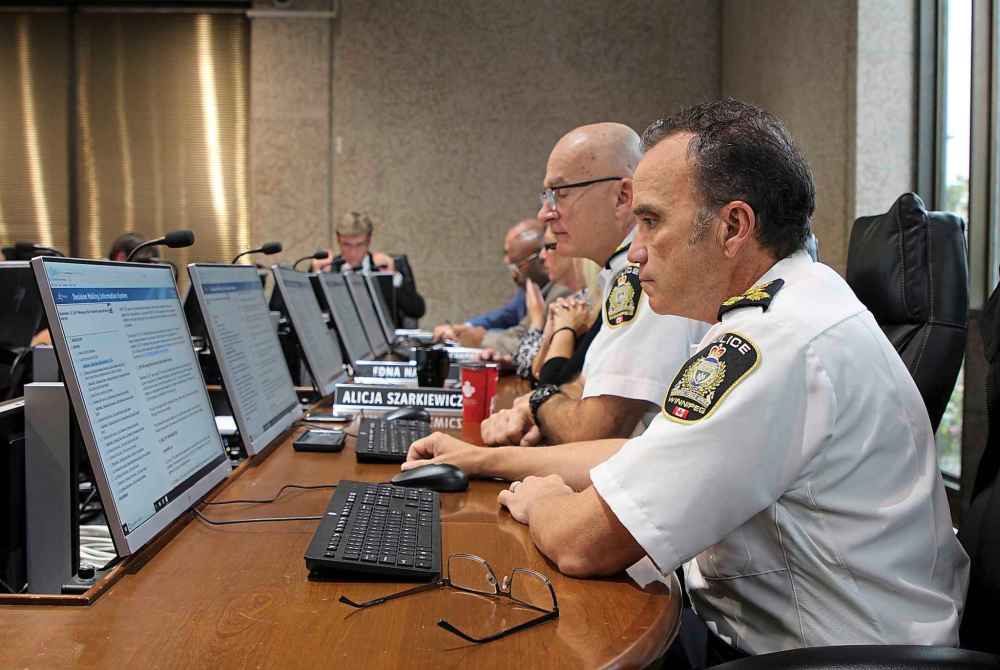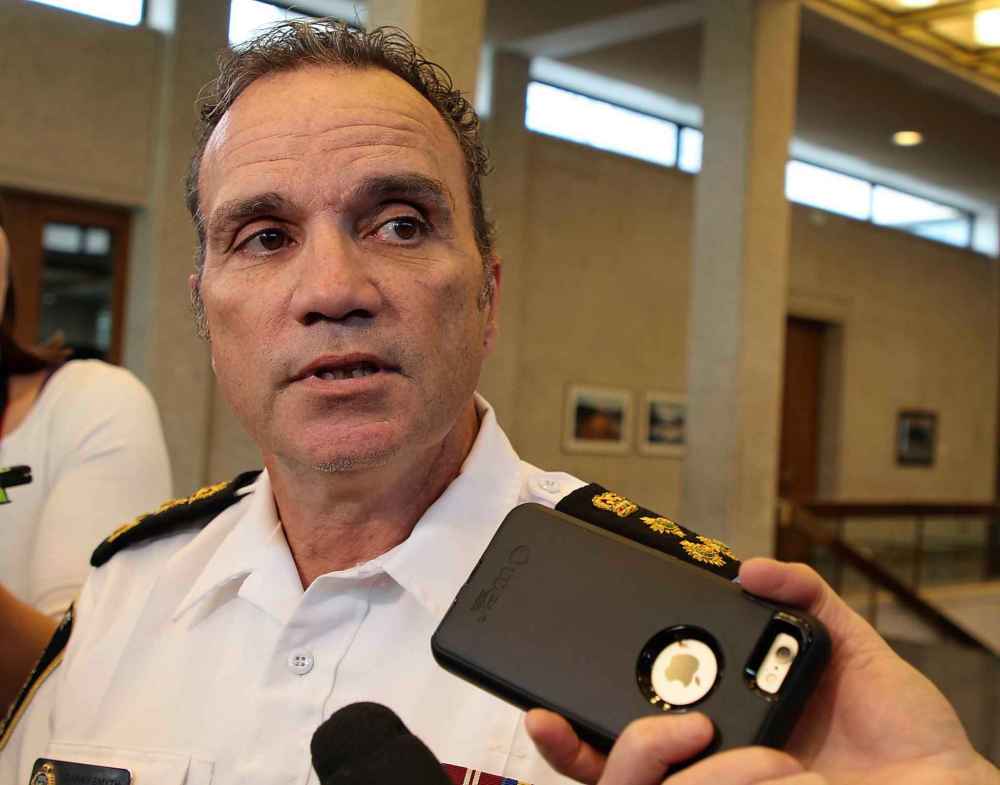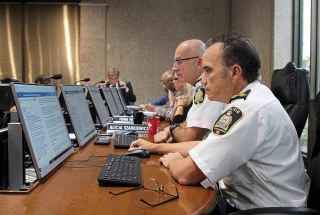Winnipeg police enter video age of crime scene assessment
Read this article for free:
or
Already have an account? Log in here »
To continue reading, please subscribe:
Monthly Digital Subscription
$19 $0 for the first 4 weeks*
- Enjoy unlimited reading on winnipegfreepress.com
- Read the E-Edition, our digital replica newspaper
- Access News Break, our award-winning app
- Play interactive puzzles
*No charge for 4 weeks then billed as $19 every four weeks (new subscribers and qualified returning subscribers only). Cancel anytime.
Read unlimited articles for free today:
or
Already have an account? Log in here »
Hey there, time traveller!
This article was published 12/09/2019 (1687 days ago), so information in it may no longer be current.
Winnipeg police are testing the use of online video platforms for crime scene assessments — a move believed to be a first in the country — in the hopes of responding to break-ins in a timelier matter.
It can take up to three days for police to do an initial crime scene assessment after a break-in is reported, due to an “unprecedented” number of calls in recent years, according to the Winnipeg Police Service. The queue, which includes but is not limited to break-and-enters, often has 200 calls waiting for response.
https://www.youtube.com/watch?v=GHa7EK1Otpo&feature=youtu.be
“People were stuck waiting, sometimes for days, for us to take a very basic report,” WPS Chief Danny Smyth told reporters Friday after a meeting of the Winnipeg Police Board. “I can think of very few things beyond a break-in that really is traumatic to a household. This is an opportunity to speed up that process a little bit.”
FaceTime assessment pilot project
Step 1: A citizen reports a commercial or residential break-in.
Step 1: A citizen reports a commercial or residential break-in.
Step 2: An officer calls the individual back, and asks if they consent to a video call in order to do an initial assessment. If the citizen accepts the offer, they can talk to an officer either through FaceTime or Google Duo and use their device to show police around the scene.
Step 3: An officer will then decide whether a forensic investigation is necessary. If so, the break-in will be placed on a queue for forensic crew response.
During the meeting, there was talk of developing a WPS app to make such video calls in the future.
In the meantime, the virtual police response pilot project will give citizens an opportunity to take part in a real-time assessment using FaceTime or Google Duo. If an individual agrees to a video call, an officer will ask them to show the crime scene in order to assess if a forensic investigation is necessary.
Video assessments are optional; individuals who decline or who don’t have access to the platforms will be placed on the wait list for an in-person assessment. (During the pilot, an officer will still arrive on the scene when a citizen agrees to do a video call, in order to ensure everything goes smoothly. If the project is fully adopted by WPS, the plan is to eventually get rid of the in-person assessment altogether.)
The online interactions will not be recorded as they are only for assessment purposes, according to WPS.

Smyth said people often have to wait in two lengthy queues — one for an initial assessment, another for a forensics investigation — when a business or house is broken into. If the pilot project goes according to plan and becomes standard practice, it will decrease response times, he said.
It is also saves time, since callers can start to clean up a mess and “get back to normal” sooner, the chief said.
Whether it be done through physical or digital collection, he added, evidence gives police the best leverage to catch criminals.
The city’s innovation strategy program is earmarking $111,000 for the pilot. The cost to equip each police station with the software necessary to make the calls is $10,000.
“We have to become more creative in dealing with crime because of the limited resources we have… This is a step forward in allowing our officers to be more focused on major crimes, but still attend to the needs of residents.”– City councillor Kevin Klein, chairman of the Winnipeg Police Board
One month into the pilot, there has been 100 per cent participation. WPS has also received positive evaluations from the dozens of people who have participated, Smyth said.
Police are strictly starting with break-ins, but Smyth said there’s potential for video calls to be used to assess victims of other crimes, including minor assaults. The pilot will continue into the fall before a review.
Coun. Kevin Klein, chairman of the Winnipeg Police Board, applauded WPS for its new initiative.
“We have to become more creative in dealing with crime because of the limited resources we have… This is a step forward in allowing our officers to be more focused on major crimes, but still attend to the needs of residents,” Klein said Friday.
maggie.macintosh@freepress.mb.ca
Twitter: @macintoshmaggie


Maggie Macintosh
Reporter
Maggie Macintosh reports on education for the Winnipeg Free Press. Funding for the Free Press education reporter comes from the Government of Canada through the Local Journalism Initiative.












